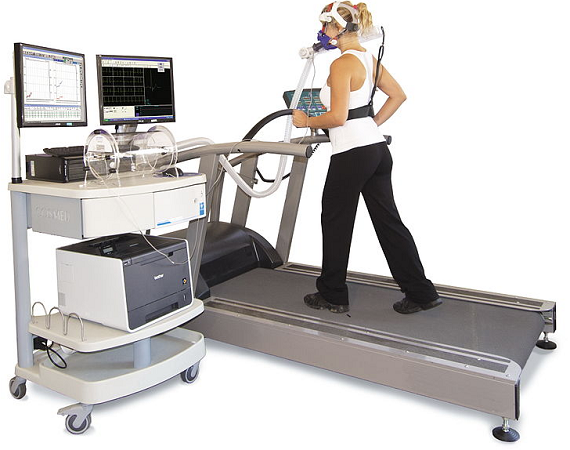Test Yourself
Episode #5 of the course Breathwork: Science and practice by David Urbansky
In this lesson, you can test how well you breathe! Respiratory fitness has been shown to be a more important factor to longevity than physical exercise and diet [1], so it only makes sense to assess and improve your breathing.
You can go to the hospital to get your pulmonary fitness checked, but a simple set of tests can already give you a very good indication of how fit your breathing is by doing them at home in just ten minutes.
Test #1: Breathing Volume: O2 Intake
It has been shown that lung capacity correlates with diagnosed illnesses [1, 2]. You can check your lung capacity by taking a deep breath and counting up. Simply stand and bend your knees slightly. Take in as large of a breath you can. Then count up as fast as you can but still be understood. Do that as quickly, quietly, cleanly, and clearly as you can. Count up as far as you can in one long extended exhale. Count out loud, do not just count in your head. Squeeze every last bit of air out with your stomach muscles pulled inward to get to as high a number as possible. Note the number down and try it again two more times. Then average the numbers. Still a bit unclear? Here are some more hints:
Do not:
• Inhale during counting.
• Skip any numbers.
• Hold your breath.
• Breathe IN and count at the same time.
• Whisper.
Do:
• Start again at 1 if you reach 100.
• Make sure you include the beginnings of each number such as the thirty in thirty-three.
• Repeat the tests in the same position you were in for the previous tests.
The higher the number, the lower the correlation with diseases [2]. Aim for counting at least up to 85.
Test #2: Complete Breaths at Rest
What is your breathing rate at rest? To find out, stand relaxed, start a one-minute countdown on your phone, and count the number of full breathing cycles that you go through in that minute. As you have learned in the previous lessons, one breathing cycle consists of an inhale, an exhale, and possibly a short pause before the next inhale. Do that test three times and average the numbers. The optimal breathing rate is 5.5 breaths per minute.
In the following chart [2], you can see that the fewer breaths you take per minute, the lower the correlation with diseases.
Test #3: Extended Pause
Let’s see how long you can hold your breath! At the end of your natural exhale, stop breathing for as long as you can. Also, resist when there is moderate discomfort, but don’t exhale any further or tighten your stomach muscles. Getting to about 45 seconds is a good goal to have. The following chart [2] shows the correlation between breath-holding capabilities and illnesses.
Test #4: BOLT
A slightly different version of the extended pause test is the blood oxygen level test (BOLT, [3]).
Do this in the morning when your breathing is still nice and quiet. Breathe normally and then stop breathing and start a timer. Unlike the extended pause test, you stop the timer as soon as you feel the first sign of “air hunger”. These signs could include anything from a muscle twitch to feeling the need to breathe again. If you are untrained, chances are you get below 20 seconds. Really trained athletes can get to 40+ seconds.
Test #5: VO2 Max
Ok, I said you can do the tests at home, but not this one. Here you will need to get hooked up to fancy machines. VO2 max measures the maximum volume intake of oxygen in a certain time at a high workload. VO2 max is reached when oxygen consumption remains at a steady state despite an increase in workload. Once that threshold is reached, your muscle’s requirements for O2 cannot be satisfied by your lungs anymore and your body will go from aerobic (energy production with oxygen) to anaerobic (energy production without oxygen) metabolism as we learned in a previous lesson. Since anaerobic metabolism is much less efficient, athletes are obsessed with increasing their VO2 max. Higher VO2 max also correlates with better health and fitness [4]. While you can’t measure it yourself, the exercises in the following lessons can help you increase your VO2 max.
After doing today’s tests you should have a good baseline that you can compare your progress to if you decide to incorporate breathwork into your life. Tomorrow you will finally get your first breathwork exercise for slow breathing! This is going to be very enjoyable and you deserve it after pulling through all the science so far. Well done!
Recommended book
Anatomy of Breathing by Blandine Calais-Germain
References
[1] Vital capacity as a predictor of cardiovascular disease: The Framingham study
[3] Measure BOLT
[4] Correlations between VO2max and performance times of recreational triathletes
Share with friends





